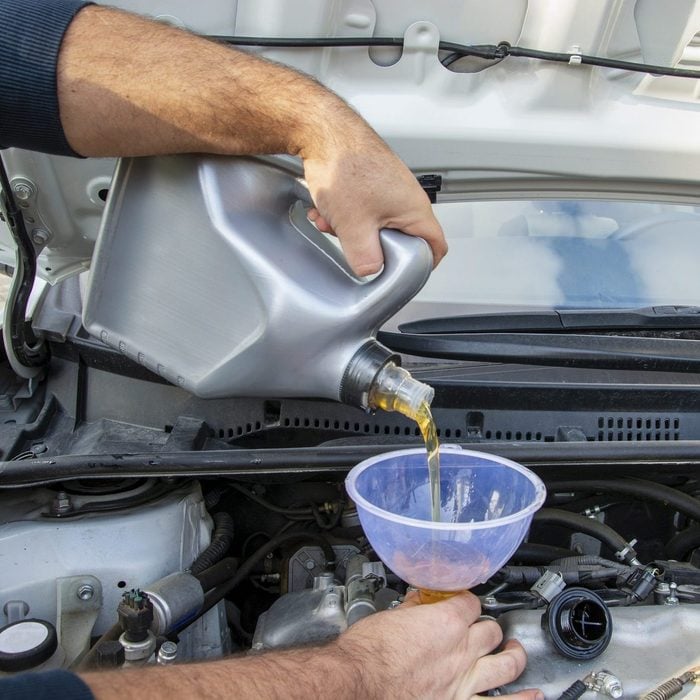
Change Engine Oil and Filter
One of the most common engine maintenance tasks, change the oil and filter as often as your vehicle manufacturer specifies is important.
Although you won’t save a ton of money doing this work yourself, there are good reasons why it makes sense. First, it’s the only way you can be sure of the quality of oil that actually goes into your engine. And second, it lets you get underneath the vehicle to look at other things while you’re loosening and tightening the drain plug. I’ve often spotted small mechanical issues while changing my oil.
WD-40, which is still great at scaring away spiders, believe it or not.

Buff Out a Paint Scratch
Complete this job correctly and you’ll think you’ve done magic. When scratches don’t go through the paint, some very fine abrasion can make them go away. You can even use a 6-in. random orbit woodworking sander for this, but with a buffing pad installed instead of the abrasive disc pad, of course. Use a mild auto body buffing compound with the moistened buffing pad, then rinse off when you’re done. Do you know what cars are made of other than steel?
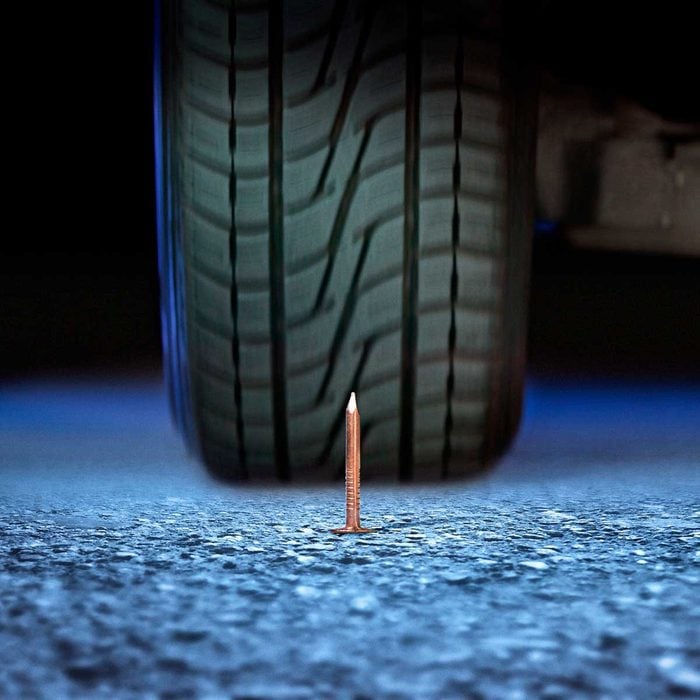
Fix a Flat Tire
Automotive tires became tubeless more than 40 years ago, making it possible to fix a flat tire while it’s still on the vehicle. First, locate the leak. Pump up your flat tire and spray it with a mixture of 80 percent water and 20 percent dishwashing liquid — it will bubble where the air is leaking. When you’ve found the spot, mark it with a piece of chalk or white paint marker.
If you have a screw, nail, staple or empty hole in the tread of the tire, that’s a DIY car maintenance job. Jack up the vehicle and put a safety block under the frame, pull out the screw or nail, then use a plug kit to fix the leak. You’ll also need a tube of tire repair cement to use with the kit.
If air is leaking where the rubber meets the metal rim, that’s a job for a mechanic who can take the tire off the rim and remount it with sealing compound.

Check and Top Off Fluids
This is a simple yet vitally important thing. Many older cars break down unnecessarily for want of nothing more than the addition of some fluid that’s low. You should check fluids in your vehicles weekly.
Standard fluids to check include the engine oil — check that with the engine off and the vehicle sitting on a level spot. Brake fluid and power steering fluid also need to be checked with the engine off. Automatic transmission fluid needs to be checked with the engine running, ideally after at least 10 or 15 minutes of driving.

Add Trailer Wiring
This job used to be difficult, but not so much anymore. Ready-made trailer wiring harnesses are available for many different vehicles. Some install more easily than others, but it’s not a difficult task under any circumstances.
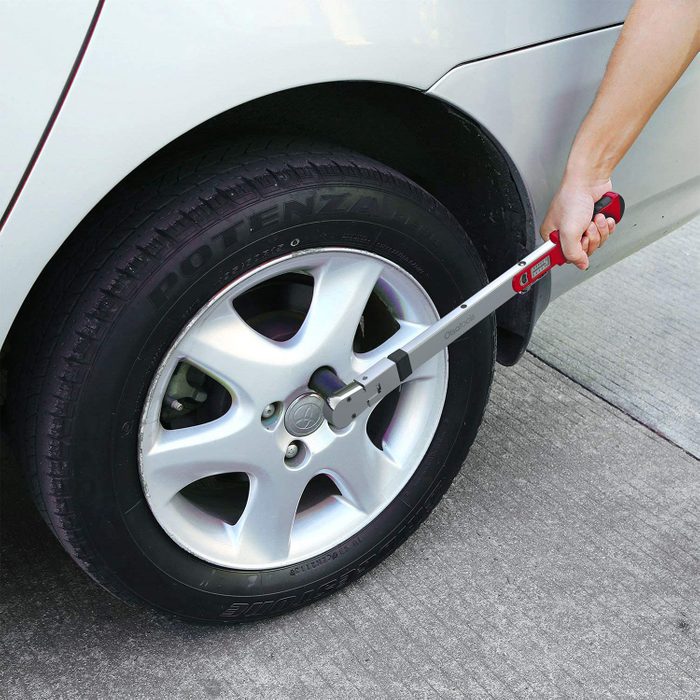
Re-Torque Your Wheels
After a spate of tragedies involving wheels falling off vehicles in the late 1990s, auto mechanics everywhere started advising that nuts on a reinstalled wheel be checked for tightness after the first 50 miles of driving. This DIY car maintenance can be done with a torque wrench, which measures the amount of force applied to a nut. Seventy foot-pounds of torque is a common amount for wheel nuts, but check online for the right amount for your particular vehicle.
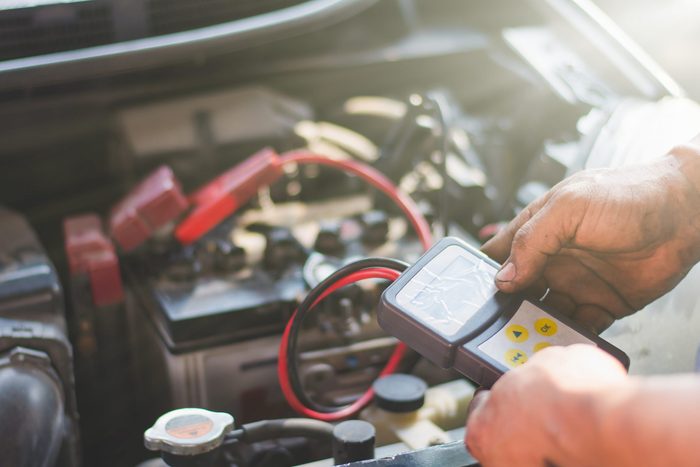
Test Your Battery
All automotive batteries eventually die, but how close is yours to leaving you stranded and unable to start? It’s hard to tell, and that’s why they invented battery testers.
Battery testers measure the capacity of the battery compared to what it was designed to deliver, plus critical details such as voltage during start-up. Great battery-testing gauges aren’t expensive, and they provide insights that will help you keep your vehicle working reliably.
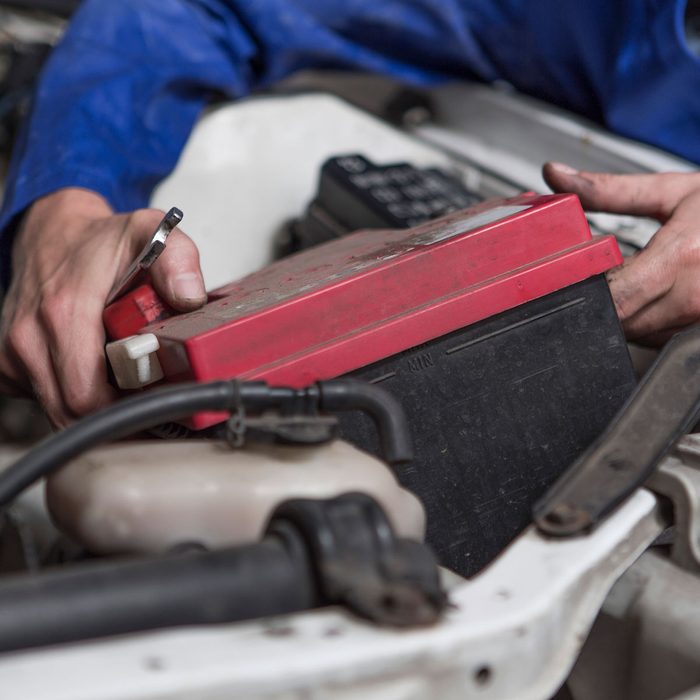
Replace a Car Battery
If you’ve tested your battery and found that it’s just not keeping a charge, that means it’s time to replace it. As a reminder, most car batteries only last about five years, if they’re taken care of. The good news is that you don’t need to take it to a mechanic. Replacing your battery is an easy fix, and most stores where you can buy a new battery will recycle your old one free of charge.
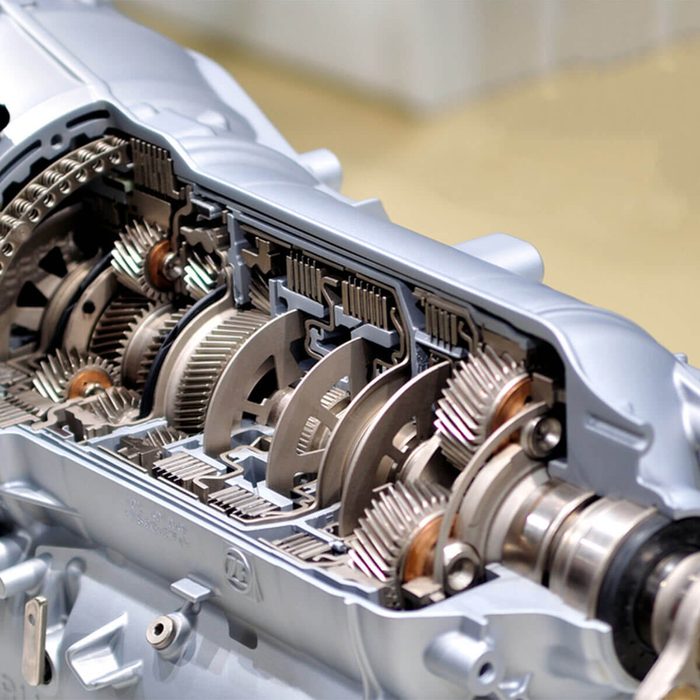
Change Transmission Fluid
Most people seem to understand that engine oil needs to be changed regularly. What’s more often missed is the importance of changing transmission fluid as well. A mechanic friend of mine tells me that most transmissions that stop working do so because the fluid wasn’t changed as often as it should have been — if ever.
Some transmission oil pans have a drain plug in them while others require you to remove the pan to get rid of the oil. Removing the pan is a pain, so only do it once before installing a retrofit drain plug to make future fluid changes much easier. You can use this same kind of retrofit drain plug if the plug in your engine oil pan gets stripped from use.
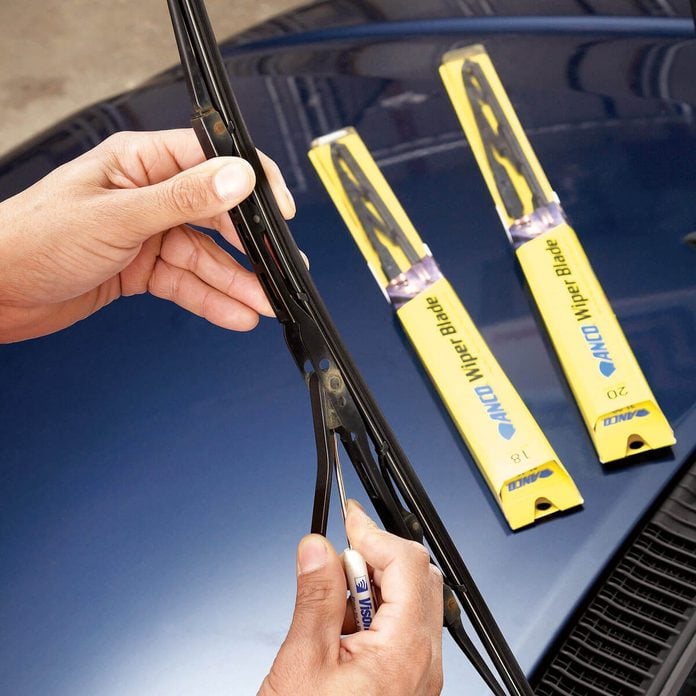
Replace Your Wiper Blades
It’s easy to tell when your blades need replacing. Simply press the washer button and see if your blades wipe clean. If they streak, they’re toast. The auto parts store will have lots of economy blades, but go with a name brand instead (ANCO, Trico or Bosch). They cost more than economy blades, but their higher-quality rubber wipes better, has better UV protection and lasts longer.
Follow the installation instructions on the package. Be sure you have a firm grip on the wiper arm once you remove the old blade. If it gets away from you, it can hit the windshield with enough force to crack it.
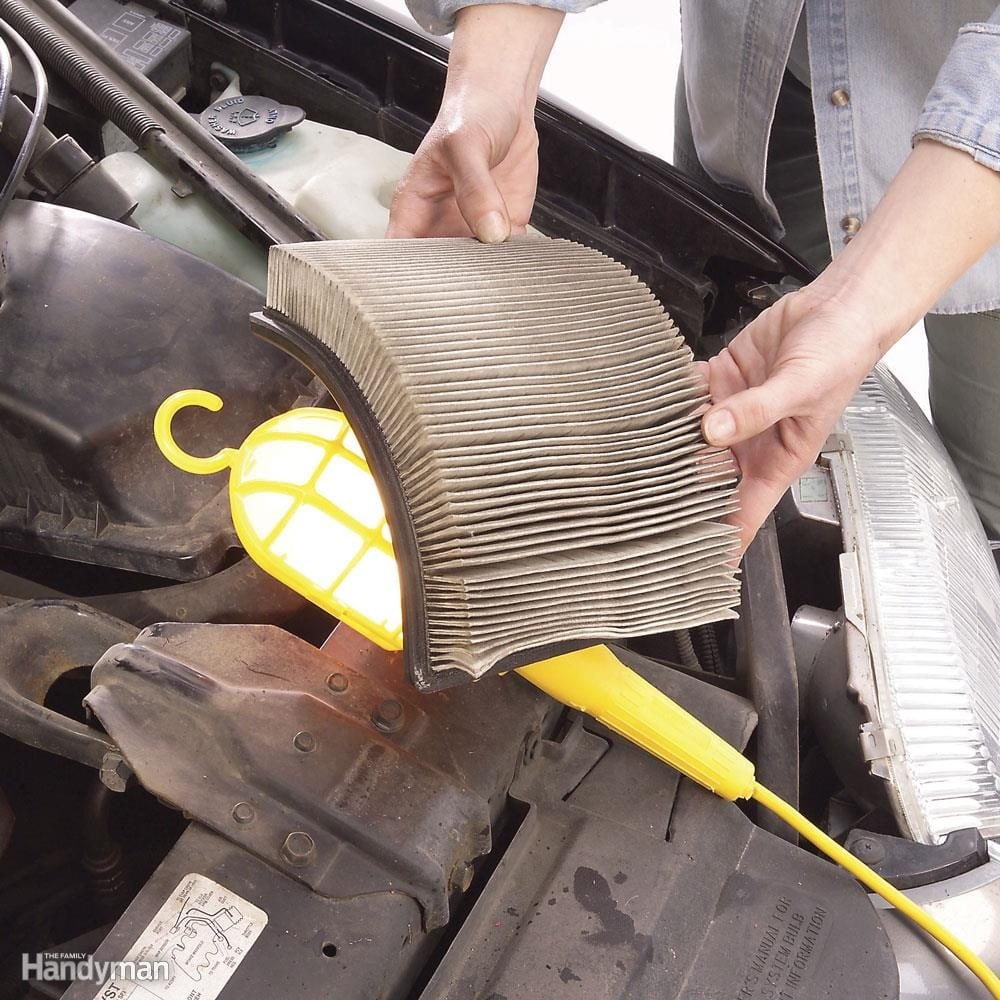
Replace Engine Air Filter
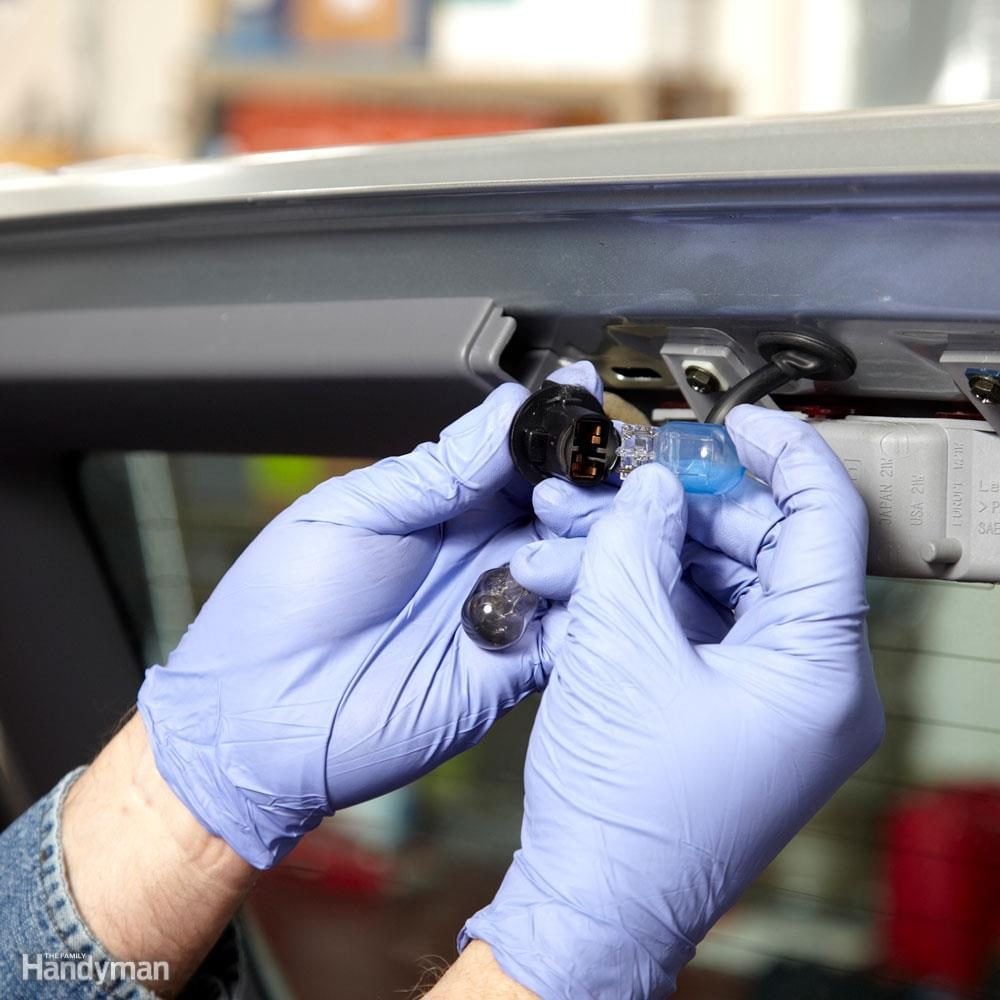
Replace Non-Headlight Bulbs

Replace That Broken Antenna
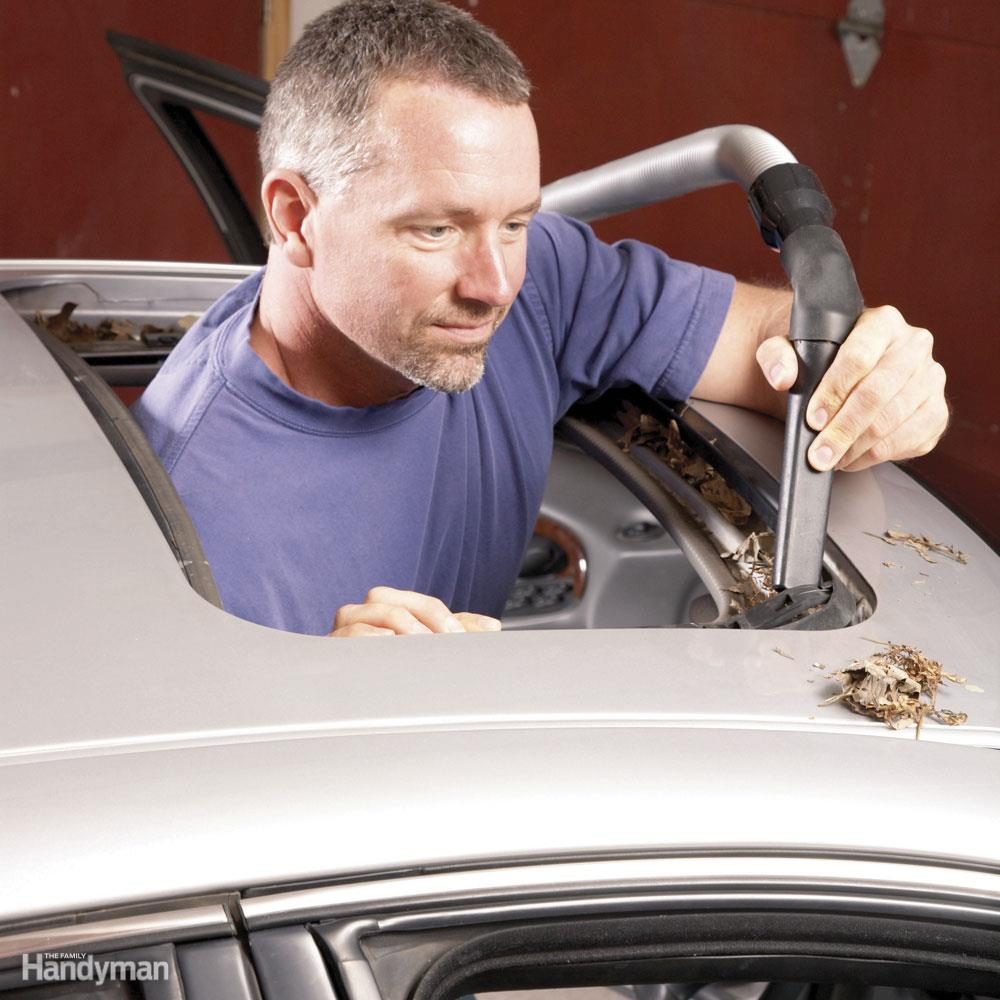
Fix That Leaky Sunroof

Fix Small Dents and Door Dings
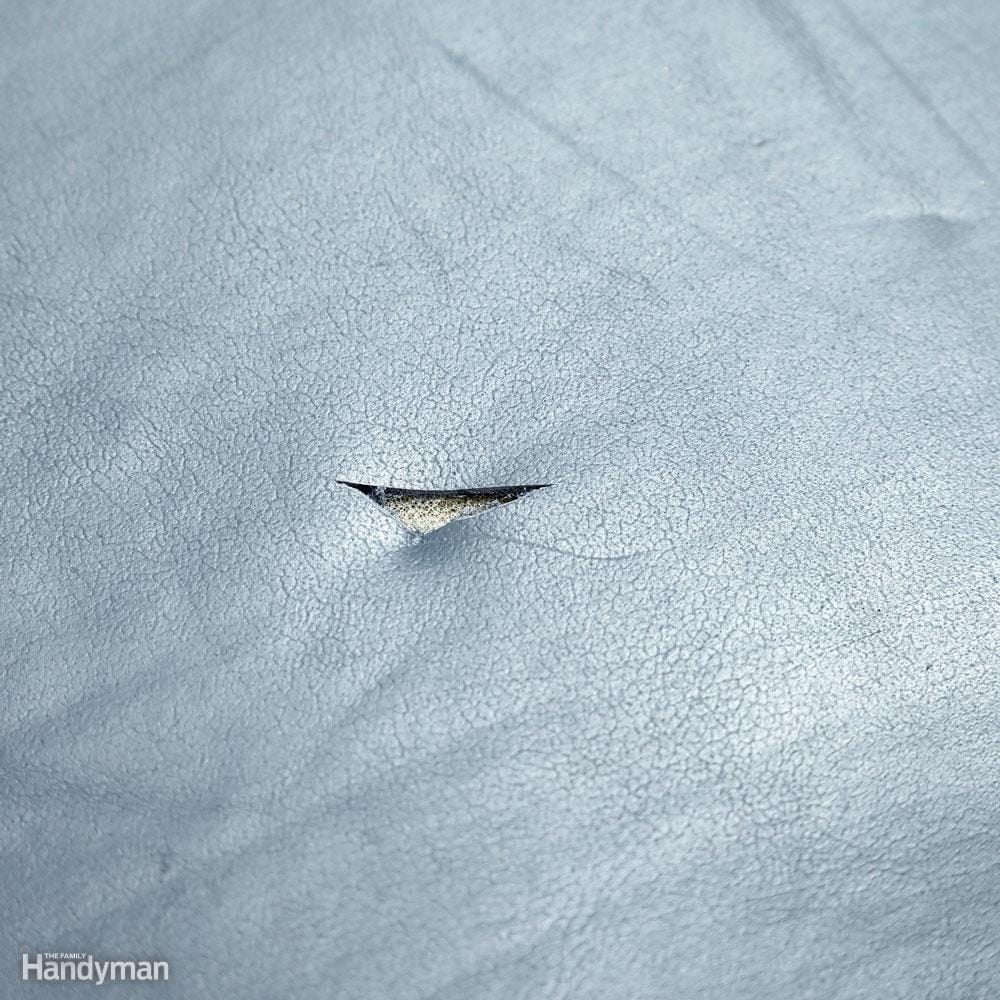
Fix Tears in Leather and Vinyl
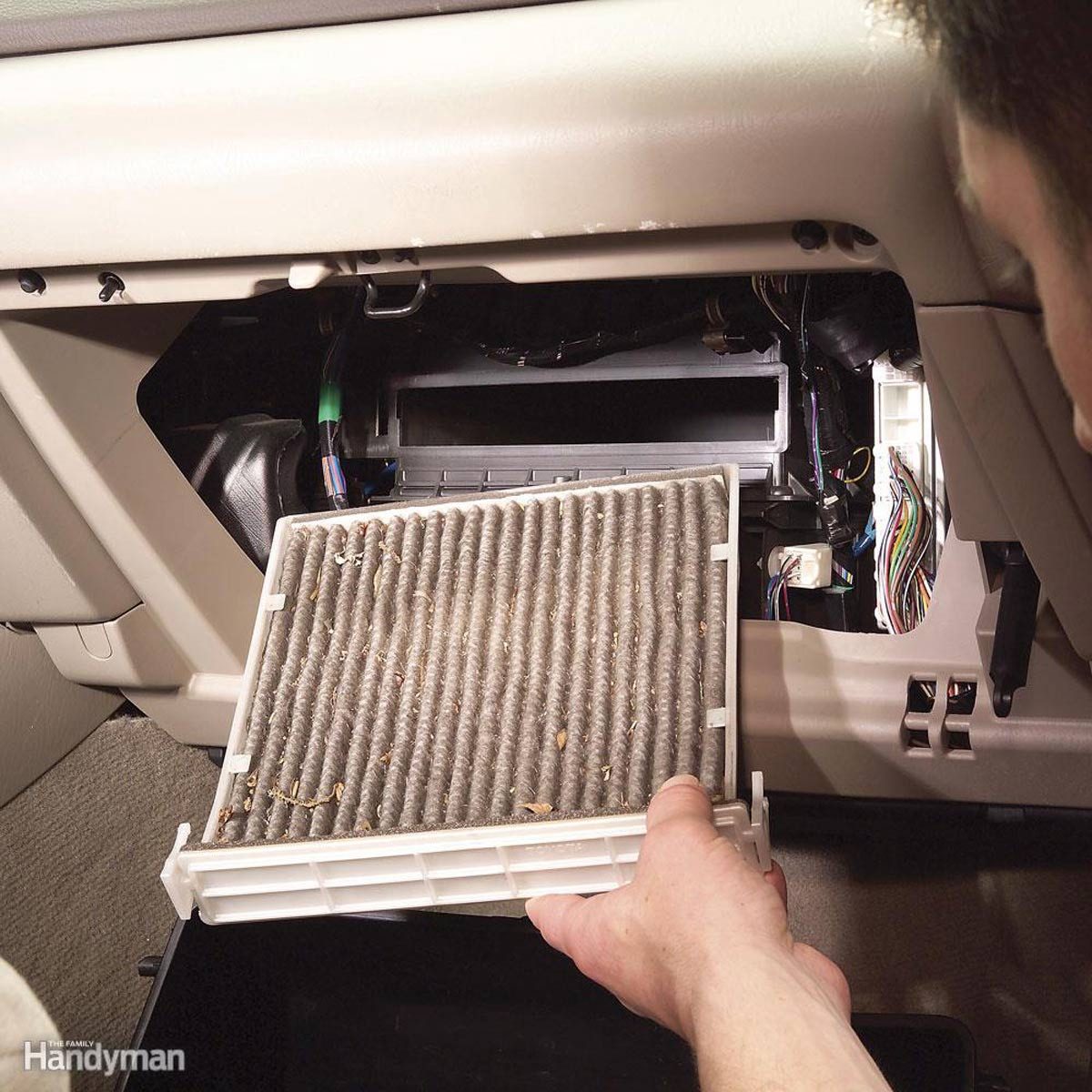
Replace Your Cabin Air Filter
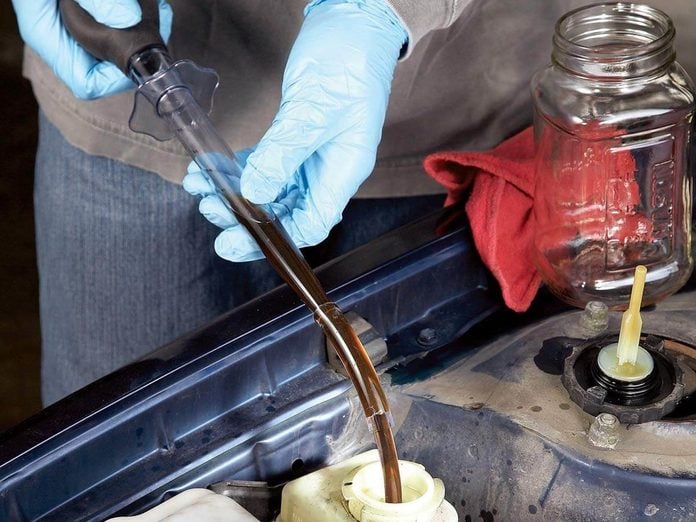
Change Power Steering Fluid
There aren’t any test strips for power steering fluid, so you’ll have to rely on the manufacturer’s service recommendations or general rule-of-thumb (two years or 24,000 miles). Use the turkey baster method to remove the old power steering fluid. Suck out all the fluid (engine off) as shown. Then refill the reservoir with fresh fluid. Start the engine and let it run for about 15 seconds. Repeat the fluid swap procedure until you’ve used up the full quart.
Note: Never substitute a “universal” power steering fluid for the recommended type, and never add “miracle” additives or stop-leak products. They can clog the fine mesh filter screens in your steering system and cause expensive failures.
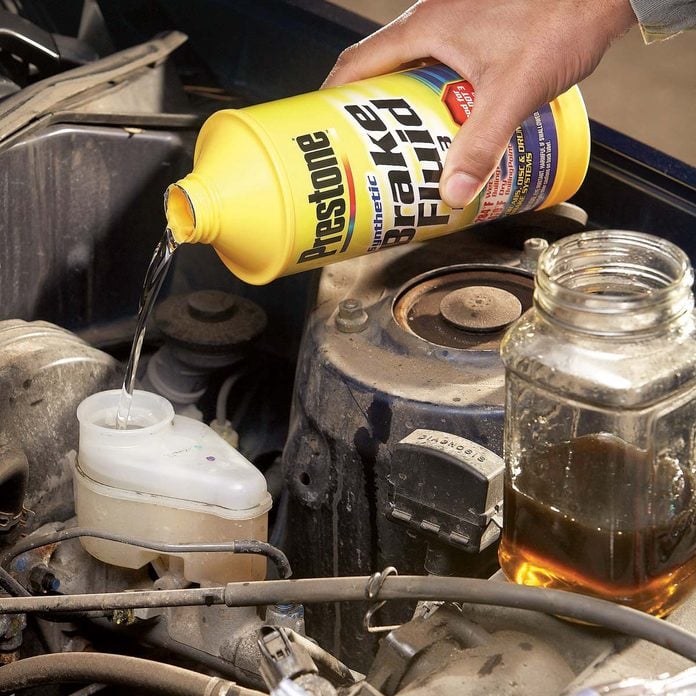
Swap Out Brake Fluid
Some carmakers recommend replacing brake fluid every two years or 24,000 miles. Others don’t mention it at all. But it’s easy to test your brake fluid. Just dip a test strip into the fluid and compare the color to the chart on the packaging.
You can’t do a complete brake fluid flush yourself, but you can do the next best thing—a fluid swap. This procedure won’t replace all the old fluid with fresh, but you’ll introduce enough new fluid to make a difference.
Use a baster to suck out the dark brown brake fluid (brake and power steering fluids are incompatible, so use a different baster for each). Squirt it into a recycling bottle. Refill the reservoir with fresh brake fluid as shown. Then drive the vehicle for a week to mix the new fluid with the old. Repeat the procedure several times over the next few weeks until the fluid in the reservoir retains its light honey color.
Note: The brake fluid may damage the baster’s rubber bulb, so don’t suck the fluid all the way into the bulb.

Clean the Carpet
Deep-clean the carpeting and upholstery. Use a carpet cleaning machine to get the dirt that settles deep into the fibers of the carpet. (Clean cloth seats this way as well.) It sprays the carpet with a solution of water and cleaner and then sucks the dirt and grime into a reservoir. A machine like this pays for itself after just a few uses. You can also rent one from a rental center or use a spray-on cleaner and a scrub brush instead.
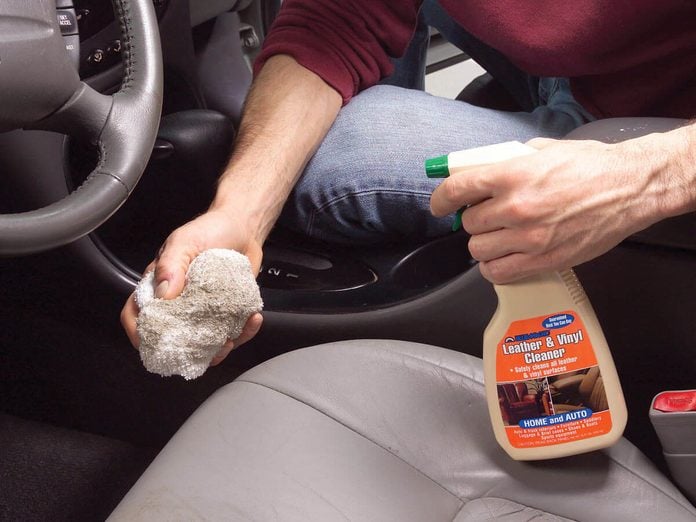
Clean and Condition the Seats
After a few years, you’ll notice that the color of the leather or vinyl seats no longer matches that of the rest of the interior. It’s not enough just to condition the leather. First spray on leather cleaner and rub vigorously with a clean terry cloth towel. To avoid rubbing the grime back into the seats, keep flipping the cloth to expose a fresh surface. Let the seats dry for an hour and then rub in a leather conditioner to keep the leather supple. It’s available at discount stores and auto stores.

Remember the Recesses
Detailing means just that— cleaning all the trim lines and recesses. Wrap a cloth around a worn screwdriver (no sharp edges) and spray it with Simple Green or other all-purpose cleaner. Move it gently along the trim lines to pick up dirt, using fresh sections of cloth as you go. Then clean around the buttons and controls, and follow up with a rejuvenator.

Wash the Windows
Don’t forget the top edges. Ever notice that line of grime on the tops of windows when they’re partially rolled down? Most people overlook this detail when giving their vehicle a quick wash. A few minutes with Windex and a clean rag is all it takes. Want to update your car’s look? Find out the cost of wrapping a car.

Change Your Engine Coolant
You can change your coolant yourself in about an hour. You’ll need to invest in an air-powered refilling tool to remove air pockets from the cooling system as you fill. You’ll save about $50 on your first coolant change and about $100 on each one after that. Check out how to change your engine coolant here.
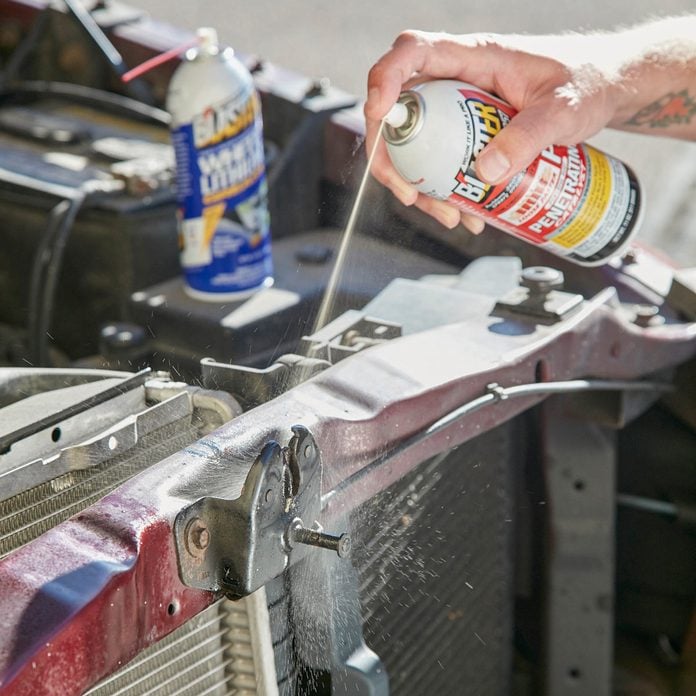
Free Up a Sticking Hood latch
If your hood doesn’t latch and unlatch easily, chances are it’s just rusty and dry. You can fix the problem in about 10 minutes with spray rust penetrant and spray lithium grease. Pop the hood and saturate the entire latch mechanism with rust penetrant. Latch and unlatch the hood several times until the mechanism works smoothly. The rust penetrant won’t last long, so you’ll have to apply a better lube. Open the hood and spray all the moving parts with white lithium grease. Latch and unlatch the hood several more times and you’re good to go.

Replace a Serpentine Belt
Automatic belt tensioners, standard in most cars now, make changing a serpentine belt a simple DIY repair. Check out how to replace a serpentine belt in about 15 minutes.

Change Your Spark Plugs
Change your spark plugs yourself to maintain peak performance and high gas mileage. In most cases it’s a simple job as long as you have the right tools.

Recharge Your Car’s Air Conditioner
Improve the cooling of your car’s air conditioner. Using a recharge kit, you can recharge your air conditioner in four easy steps.

Find and Replace a Blown Fuse
Cars run on electricity as well as gas, and almost all of it runs through fuses. Learn where they are, how to spot a blown one, and how to replace a fuse. It takes about five minutes, costs about $2, and it’ll save you the hassle of a trip to the repair shop. Make sure you know how to save money on car repairs.
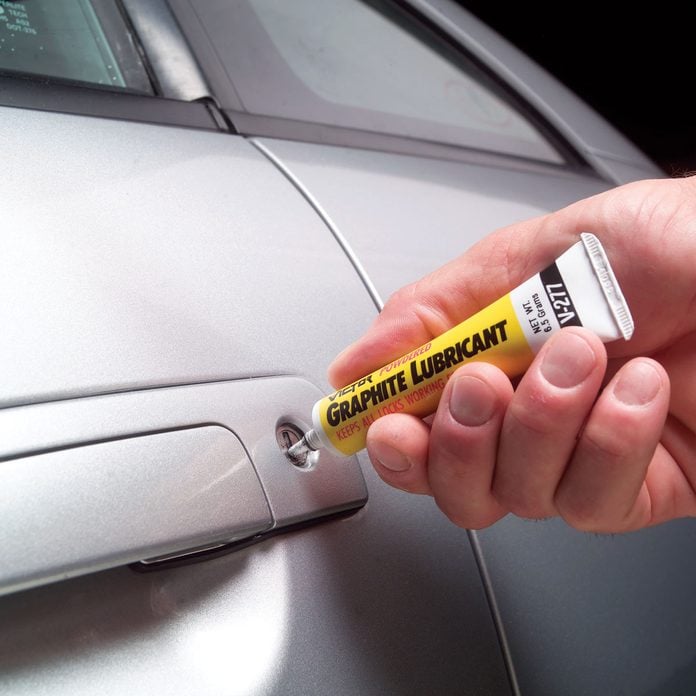
Add Graphite to Door Locks
Graphite powder keeps delicate lock mechanism working. We don’t think much about our door locks until the key breaks off in the cylinder. Keep these delicate mechanisms moving freely with a blast of dry graphite powder. You may need to push the dust protector flap back slightly with a small metal nail file to get at the lock. A quick pump of the tube will dispense enough graphite. Move the lock cylinder with your key several times to work the graphite into the mechanism. Do this to your trunk lock as well.

Replace a Broken Wheel Stud
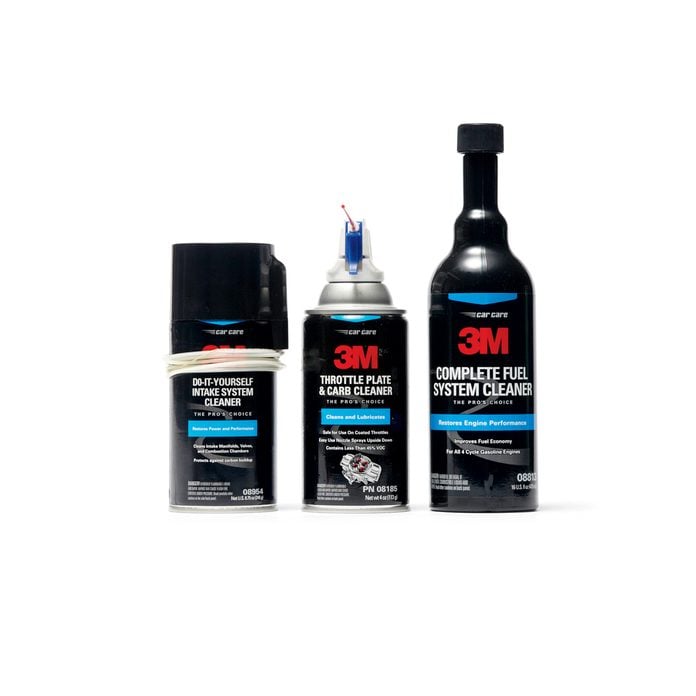
Clean Your Air/Fuel Intake System
Do you get a crummy idle or poor engine response when you put the pedal to the metal? You may have soot and carbon buildup on the valves, intake manifold and throttle body assembly, as well as clogged fuel injectors. Shops charge $100 and up to perform a fuel induction cleaning service. But you can do the same thing in about 30 minutes with the 3M No. 08963 Do-It-Yourself Fuel System Tune-Up Kit; $40 from amazon. com.

Fix Your Headlights
Clean Cloudy Headlights
Clear your fogged or yellowed headlight lenses in 45 minutes for less than $15, rather than spending $100s to replace them. Learn the secret to cleaning headlights here.
Fix Dim Headlights
Simply clean the ground connection to restore the brightness of dim headlights. And apply a little dielectric grease. Or replace the bulb if you see a gray/brown film on the inside of the glass.

Replace Headlights
The hardest part of the job is choosing a new bulb. You can spend more time shopping for the bulbs than it takes to install them. The choices are mind-boggling. Every bulb manufacturer has its own confusing names for each style, making comparisons difficult. But it boils down to four upgrade categories—brightness level, life span, light color and energy consumption. Learn about your vehicle’s lights, flashers, and electrical systems.

Fix a Leaking Valve Cover Gasket
Replace a leaky gasket cover on a 4-cylinder engine easily and in less than an hour for less than $100.
